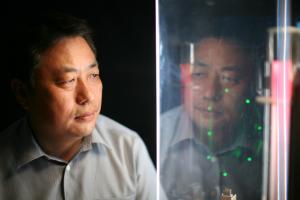The Year of the Tiger
According to the Chinese Zodiac Calendar, 2010 is the Year of the Tiger, which commenced on 14 February. The tiger symbolizes bravery, courage and aggressivity. For ITER, this means that in 2010 it is our goal to make remarkable progress. The most important task will be the finalization of project Baseline by June at the latest, detailing the work scope, schedule and resources of the project. The early settlement of the Integrated Project Schedule is crucial for the project's progress and for planning the future work scope and budget.
Speaking for the Department of Central Engineering and Plant Support (CEP), we will focus our efforts this year on finalizing the conceptual and the preliminary design reviews for ITER's electrical power supplies, the cryoplant and cryolines, the cooling water system, the detritation systems, and the gas injection systems and to conclude the related Procurement Arrangements. A major milestone in the design of the tokamak cooling water system (TCWS) was achieved in January with the award by the US ITER Project Office to AREVA US of a basic ordering agreement for design and fabrication of the system.
Recently, a new concept for roughing pumps has been developed following the ITER Organization/US Domestic Agency workshop last December. Roughing pumps are used to transport gas from the ITER machine to the tritium plant and recycle gas in the ITER pellet injectors. Due to the high gas throughputs on ITER and the very large vacuum systems the roughing pumps will be extremely challenging to design. An aggressive work program is in place to validate the new concept.
Another challenging technical issue for CEP Department is the leak localization due to the overall complexity of the ITER machine and the difficulty to access its interior. Several key R&D tasks have been launched to tackle this problem, which include an investigation into the spectroscopic leak localization of water leaks into the tokamak and a gas plug flow concept for leak localization of thermal shield. Leak localization R&D program will be further developed and is expected to which should continue into 2013.
Lastly, there has been good progress with the Japanese Domestic Agency for the two-year R&D task associated with pilot testing and demonstration of the wet scrubber column technology employed in detritiation systems. This technology is used to remove tritiated gases from atmosphere streams by sending them through a counter-current column, "scrubbing" off the undesired components with water. It shall be used within the ITER Tokamak Complex and the Hot Cell Building confinement systems after the successful demonstration to the French Authority.


